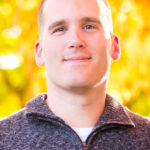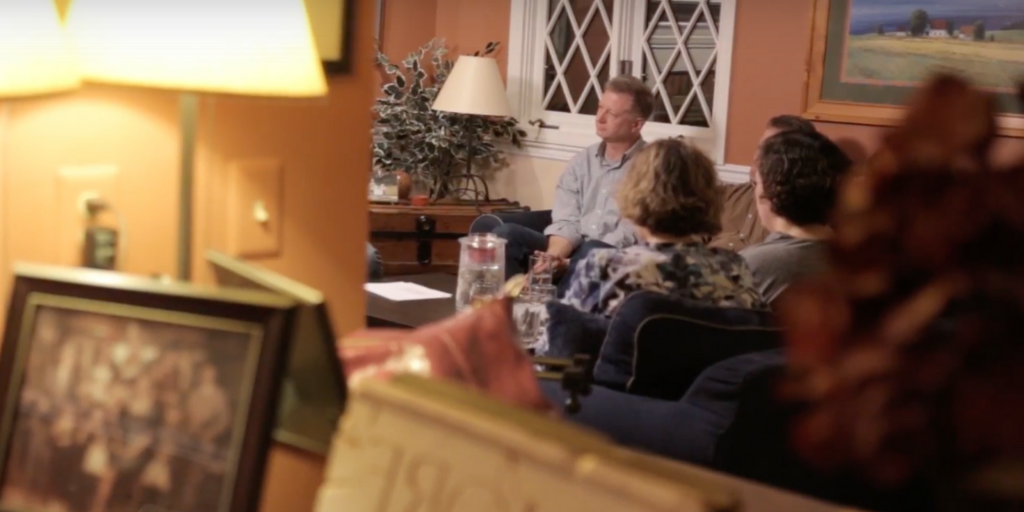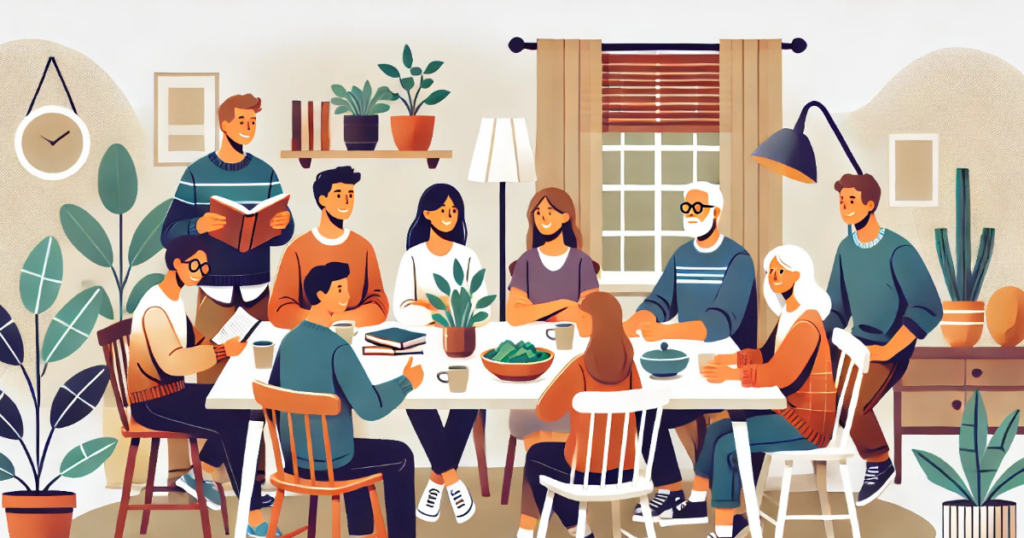We walked through a door to the future about a month ago, and it was not what we were expecting.
If we had been told then that churches would be shutting their doors for an extended time, we may have laughed! “Normal” typically refers to conforming to a standard, i.e. “usual, typical, or expected.” It has now been six weeks since our own congregations have done anything we once considered “normal”. The threat of COVID-19, and the measures required to fight its spread, have pushed congregations all over the world to think differently about worship, teaching, community, and discipleship. Ministry leaders have had to become adaptive and creative as they navigate this new reality.
Ministry leaders have had to become adaptive and creative as they navigate this new reality.
Tweet this.
In Fresh Expressions we describe the first, second, and third places, concepts originating from the work of sociologist Ray Oldenburg. First Place: The home or primary place of residence. Second Place: The workplace or school place. Third Place: The public places separate from the two usual social environments of home and workplace, which host regular, voluntary, informal, and neutral spaces of communion and play. Examples are environments such as cafes, pubs, theaters, parks, and so on.
In a pandemic world, for those of us who are fresh expressions practitioners, our two primary mission spaces have been closed off, the second and third places are shut down. We cannot have Tattoo Parlor Church, the tattoo parlor is closed. We cannot gather in Moe’s Southwest Grill for Burritos and Bibles, they are doing take-out only. The dog park is empty, as people are quarantined at home… no Paws of Praise.
This limits us to the only spaces we have left:
- The first place, or the home place.
- The digital place, or the “space of flows.”
This has challenged us and forced us into a place of continuous innovation.
Our Acts Moment
Even as we see the rise of innovative ministry practices as churches adapt to uncharted territory, an old Scriptural claim rings out: Nothing under the sun is truly new (Ecclesiastes 1:9). Acts 2:42-47, which follows the arrival of the Holy Spirit and a stunning moment of gospel witness, describes a newborn community of Jesus-followers:
They devoted themselves to the apostles’ teaching and to fellowship, to the breaking of bread and to prayer. Everyone was filled with awe at the many wonders and signs performed by the apostles. All the believers were together and had everything in common. They sold property and possessions to give to anyone who had need. Every day they continued to meet together in the temple courts. They broke bread in their homes and ate together with glad and sincere hearts, praising God and enjoying the favor of all the people. And the Lord added to their number daily those who were being saved.
The church became once again a target of ridicule, as some pastors and congregations decided to worship despite stay at home orders. Meanwhile, most Christians decided it is not some brave act of leadership to “have church” in spite of social gathering limits. Somehow the exceptions typically seem to be the most front-page worthy. This anserine position is however a failure to properly appreciate the Scriptures and Christian history. It’s a failure to understand rightly what the church actually is.
Christians did not have dedicated buildings or professional clergy until around 380 AD when Christianity became the state religion. This Acts passage describes what the early church looked like as followers of Jesus met for their gatherings, “they spent much time together in the temple, they broke bread at home and ate their food with glad and generous hearts” (Acts 2:46-47). When the temple was destroyed in 70 AD, they met solely in their homes. Under these conditions, for over 300 years, the church experienced massive growth (millions became Christians across the Roman empire).
The church is not a building that you go to. It is a community of people who derive their life from the life of God. If we want to be true Jesus-followers, we need to find new ways to plant the seeds of the Gospel in the native soils of a digital world and let it grow wild. This is an act of faith, not fear.
Perhaps for the first time in human history, the temple and the home table can be collapsed into one “third place” and we are owning this reality.
The story of the early Church is the story of a movement. While it may not be a one-to-one correlation, we believe that we have entered our own Acts moment. This moment of disruption brings an opportunity for movement. This is a time to move away from an emphasis on big, centralized worship in our buildings to a focus on small, distributed worship in our homes. This is a time to move from a clerical elite to a priesthood of all believers. This is a time to move away from community around a stage to community around our tables.
This is a moment to equip individuals and families for home-centered worship, discipleship, and service.
This is a moment to equip individuals and families for home-centered worship, discipleship, and service.
Tweet this.
Michael Beck
Living Room Church
At Wildwood we have now moved into a completely distributed form of church. Our main worship gathering is called “Living Room Church.”
Living Room Church is a simple concept. Our approach with worship has been not to do the stage production in an empty sanctuary, but to sit face to face with our people and give them an opportunity to be heard and to connect. We have now returned to the Church we see in the Book of Acts who met primarily in their homes. Each week we have six different living rooms connected on the stream. We’ve interviewed an “ordinary hero,” one of our lay pioneers, who share how they are processing living through the Coronavirus quarantine.
We pray, sing, sign a digital attendance pad, recite the Apostle’s Creed, take an offering, our lay preaching team facilitates a sermonic conversation, and we then conclude with the Lord’s Supper. We worship Jesus separately but together, from our living rooms to your living rooms.
Digital Fresh Expressions
The future of the church is not fresh expressions. The future of the church is the blended ecology of fresh expressions and traditional congregations—a manifestation of not only Jerusalem and Antioch, Gathered and Scattered, Tabernacle and Temple, but now Digital and Analog.
Some of our fresh expressions are currently deceased, others, like Digital Yoga Church (practicing yoga together through Facebook Live and YouTube), Supper Table Church (families eating meals together in quarantine connected by screens) and Underground Seminary (a gathering of lay and clergy learning together through Zoom) are thriving thrive like never before.
The idea is to offer relationship, and to share in formational Christian practices, connected across space and time through technological flows.
In the pandemic, we are discovering that digital space is its own kind of “third place” a neutral, communal gathering location.
In the pandemic, we are discovering that digital space is its own kind of “third place” a neutral, communal gathering location.
Tweet this.
These technologies literally enable us to be present to some degree across the world at any given moment. A part of us, our technologically-extended mind, is inhabiting both digital and analog space simultaneously. The technology enables a kind of extension of ourselves to be present on the digital frontier. This leads to the compression and transformation of time, and the experience of “real virtuality.”
We need to seriously consider how we can be an incarnational presence in this digital space. We are finding that many people we engage with in our digital fresh expressions are bridging back to our Living Room Church (which serves as our “inherited congregation” is this nascent scenario), and new people in our inherited congregation are pioneering fresh forms of church on the digital frontier.
Jordan Decker
Story-Catchers and Story-Tellers
If we are going to see worship and discipleship take root in our homes, we must work not simply at offering content but at building a culture. If the only thing we do with this moment is replicate what we were doing in an online format, we are missing a major opportunity!
We have a unique opportunity to shape the culture of our churches and communities in this season. One of the most important things you can do to build a culture is to tell a story. Human beings are wired for storytelling.
If we want to see a culture of spiritual formation in homes, we must become better story-catchers and story-tellers.
We have to find ways to help ourselves and others pay attention to their own story, immerse ourselves in God’s Story, and find the points at which the two connect. When we can cultivate an awareness of these two interweaving narratives, we give them an opportunity to inform and transform our lives.
Making Our Homes EPIC
I’ve come across two suggestions that can help us put some flesh on this idea. The first, from Don Whitney’s book Family Worship, is the wonderful little pattern of read, pray, sing. Whitney argues that these three, simple acts are what build a culture of worship at home.[1]
The second, from Len Sweet’s book Postmodern Pilgrims, is the acronym EPIC. Sweet argues that churches would do well to create worship that is EPIC, that is, experiential, participatory, image-based, and connective.[2]
Taking both of these together, we can help ourselves and others turn our homes into epicenters of worship, discipleship, and service. We can do this by finding ways to:
READ in a way that is story-driven and immersive. To begin with, we should dive into the Jesus Story as it is presented most clearly – the four New Testament gospels. The gospels give us a Jesus-shaped lens by which we can see the rest of the Story in a better light.
There are many things we can do to “jump into” the narrative: ask questions of the characters, pay attention to sensory details, draw or paint the biblical scene, re-write the story in your own words.
PRAY in a way that is responsive and collaborative. Prayer can be a time that we respond to God’s Story while also articulating our own story, and therefore becomes a point of intersection between the two.
One way to do this is to make space for those in the home to “build” the prayer together. Perhaps each person can spend some time sharing the story of their day, and then lifting up the collective good and bad of the day in prayer together.
SING in a way that is fun and active. Songs have a way of shaping our attitudes and actions – songs stick in our hearts and move us. Songs that remind us of God’s Story or help us articulate our own story can be powerful tools as we build home worship.
Songs gain even more power when we can add senses and movement into the mix. Find or create something that serves as a visual representation of the lyrics and make up some gestures to do while singing.
One Step at a Time
The time of coronavirus has been a hard one, but it also provides us with an incredible opportunity:
Our homes can become epicenters of worship, discipleship, and service – we just need a little nudge.
If we can find ways to equip ourselves and others to take a step in that direction, we may give the Holy Spirit all the opportunity he needs to nudge us further along. I have come up with a simple liturgy that I am trying at home with my wife and two little boys.
We start with a short prayer, then we immerse ourselves in a biblical story. We have been following the gospel reading of the Revised Common Lectionary three days of the week, with the Old Testament reading as an option for the other days. We collaborate on a prayer together and end with a song.
It’s a small step, and there will be many more to follow. But that is how you walk into the future, after all: one step at a time.
Sample Guide
Prayer Starter:
Our God, thank you for telling the greatest Story ever told! Help us listen with open ears and open hearts (create gestures) so Your Story can go on in our lives. Amen.
The Story
(Read from the International Children’s Bible)
Some fun things to try when you read/tell the story:
– Create voices as you read/tell it.
– Act it out! Pretend to be in the story!
– Get to know the characters – ask them questions!
– Pay special attention/point out things you would sense (see, smell, hear, taste, touch).
Monday 4.13.20: John 20:1-18
Tuesday 4.14.20: Exodus 15:1-18
Wednesday 4.15.20: Matthew 28:1-10
Thursday 4.16.20: Song of Solomon 2:8-15
Friday 4.17.20: Song of Solomon 5:9-6:3
Saturday 4.18.20: John 20:11-20
Some fun things to do after you read/tell the story:
– Ask: If this story were a picture, what would it be? Then draw or paint it!
– Rewrite the story in your own words.
– Write a song about a character!
The Prayer
Think about the good and the bad of the day (families, let everyone share):
Open Hands Facing Down: Our God, we let go of our hurt… insert the day’s “bad stuff”.
Open Hands Facing Up: Our God, we take in your gifts… insert the day’s “good stuff”.
The Song
“This Little Light of Mine” / Before singing, light a candle in the middle of the table.
Fun moves: “light of mine…” cup hands together / “let it shine…” hands up, “spirit fingers”
[1] Donald S. Whitney, Family Worship (Wheaton: Crossway, 2016), Kindle, 44.
[2] Leonard Sweet, Postmodern Pilgrims: First Century Passion for the 21st Century World (Nashville: Broadman and Holman Publishers, 2000), 28-30.
J ordan Decker has been living missionally since graduating from high school, when he began to lead a few small groups in local restaurants. Jordan now serves as pastor of LifeSpring Community Church in West Virginia, where he works with addiction recovery programs, a mentoring program at the local high school, and seeks to develop other missional partnerships within the community. He currently lives in Point Pleasant with his wife, Brianna, and their two children.
ordan Decker has been living missionally since graduating from high school, when he began to lead a few small groups in local restaurants. Jordan now serves as pastor of LifeSpring Community Church in West Virginia, where he works with addiction recovery programs, a mentoring program at the local high school, and seeks to develop other missional partnerships within the community. He currently lives in Point Pleasant with his wife, Brianna, and their two children.


